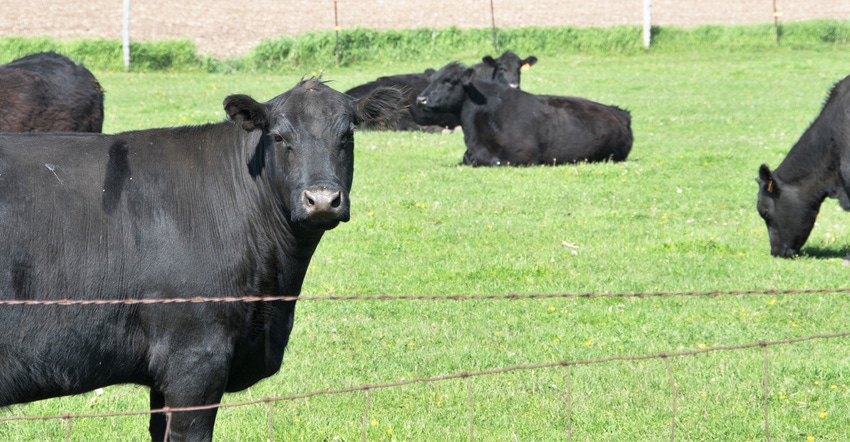
Farmers ask, "Why doesn't my grass grow this spring?"
"It's the cool weather and a whole lot more," says Craig Roberts, University of Missouri Extension forage specialist.
The best pasture grass grows in 70-degree F weather, Roberts says. That's day-and-night average for 24 hours. It's not a day with 70 degrees for two hours in the afternoon.
A bigger problem occurs when cows grub pastures into the ground with early grazing. That happens when herds are turned out to pasture at the first sign of growth.
"We're talking grass 1 inch tall," Roberts says. "The pastures look like pool tables."
Short grass leaves don't have enough photosynthesis to create new growth. He adds that early grazing consumes stored carbohydrates held in reserve to start spring growth.
Caution with nitrogen
Could spreading nitrogen fertilizer make more grass? "Maybe some, but not much," Roberts says. In normal years, farmers don’t need nitrogen, as a spring flush of growth makes more grass than cow herds can eat. Too often, early growth matures and goes to waste.
"This year, use limited nitrogen," Roberts says. "Normally, we'd say 40 pounds of N per acre, but this year no more than 20 pounds."
That may require farmers to spread the fertilizer. "Commercial applicators won't want to come out for such a limited sale," Roberts says.
Applying nitrogen in spring has too many downsides to be used regularly. The nitrogen makes too much growth. Worse, nitrogen applied to toxic tall fescue, the most common pasture grass in Missouri, spurs development of alkaloid toxins in the grass. Toxins cut animal growth, milk and reproduction.
Also, adding nitrogen crowds out legumes desired in pasture mixes.
Management is key
Better weather outlooks with higher temperatures lie ahead. Plus, plentiful rain makes for grass growth.
"Moisture that's bad for crop plantings is good for livestock producers turning herds out to pasture," Roberts says.
Management-intensive grazing, including rotational grazing, allows for better use of sparse grass. MiG boosts production by about one-third.
Managed grazing is taught at grazing schools held by MU Extension in cooperation with the USDA Natural Resources Conservation Service and county soil and water conservation districts.
Roberts urges herd owners to enroll.
Also, contact your regional MU Extension agronomists for help on regenerating pasture growth this year.
Dailey is a retired MU Extension professor. He writes from his home in Columbia, Mo.
About the Author(s)
You May Also Like




